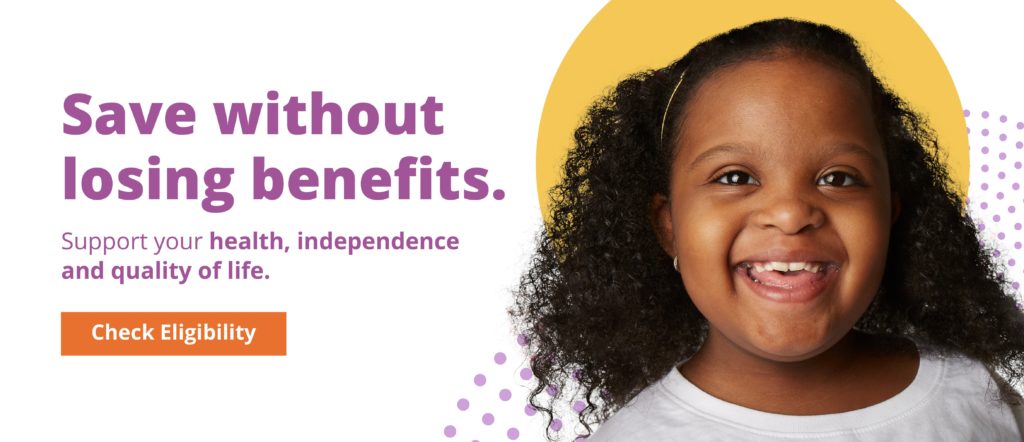
Raising and caring for a child with a disability oftentimes comes with added expenses. Things like extra medical costs, therapies, academic tutoring, assistive technology and much more come into play. Getting help to cover these additional expenses can be difficult. This is especially so when you have an average income and don’t qualify to receive government support for your child with a disability. When thinking about your child’s future and whether they will be able to support themselves, it can become overwhelming for parents to plan for, let alone manage the here and now.
The state an individual lives in and the disability they have largely determines the financial rules and restrictions they must follow. A bill was passed in certain states that requires employees to pay disabled workers at least minimum wage. Still, many disabled people must follow intricate rules to receive the benefits they need to successfully care for themselves.
So how can a person with a disability pay for all their daily living expenses like housing, food, education, transportation, ect., if they can’t earn a living wage, or are unable to? And on top of that, they risk losing any government benefits if they have “too much” money in their name.
Enter the ABLE Act
Thankfully, Congress passed the ABLE (Achieving a Better Life Experience) Act in 2014. The ABLE Act amends Section 529 of the Internal Revenue Service Code of 1986 to create tax-free savings accounts for individuals with disabilities. Here is the official description of the intent of the ABLE Act from the ABLE National Resource Center:
“By making tax-free savings accounts available to cover qualified disability-related expenses (including education, housing and transportation), this law aims to ease financial strains faced by individuals with disabilities. Additionally, the funds contributed into these accounts will not negatively impact the person’s eligibility for public benefits, such as Medicaid. The funds in these accounts don’t replace benefits provided through private insurances, the Medicaid program, the Supplemental Security Income program, the beneficiary’s employment and other sources. Instead, the funds supplement these benefits.”
A Powerful Tool for Michigan Families

Michigan established our MiABLE program back in 2016. We had the representative from the Michigan Department of Treasury here in our clinics to familiarize families on the benefits of having a MiABLE account for their child with a disability. Scott de Varona shared all the specifics of how the program works, how to set up an account and answered a plethora of questions from parents.
Here are a few of the highlights:
- To be eligible, individuals must become disabled before the age of 26. They can prove their eligibility one of three ways: eligible for SSI or SSDI because of a disability (but do not have to be drawing on those benefits), have a condition listed on SSA Compassionate Allowances List, or self-certification with a physician diagnosis and documentation.
- Qualified Disability Expenses (QDE) include much more than the original 529 College Savings Plans. MiABLE accounts can be used to pay for the expenses of everyday living for the person with the disability. QDE’s include: education, housing, transportation, employment training programs, assistive technology, personal support services, healthcare and medical costs, financial management services, legal fees, and end-of-life expenses.
- The maximum contribution per year is $17,000. And account holders can have up to $100,000 in an ABLE account before their SSI benefits may be suspended. Once the account falls back below the $100,000, SSI benefits can resume.
- ABLE assets are excluded for Medicaid eligibility. There is no asset threshold as there is for SSI benefits.
- Investment options include a range of conservative to aggressive stock. Additionally, for those who want easy access to use their account now, there is a money market savings account with a debit card option.
- If you have a Financial Advisor, you can allow them to manage your investment options. They need to complete the Agent Assisted Enrollment Form.
- A MiABLE account doesn’t replace a Special Needs Trust. It’s another “tool in the toolbelt” to provide for an adult or child with a disability.
Tax Benefits
- ABLE accounts are funded with after-tax contributions and can grow tax-free when used for qualifying disability expenses.
- In addition, the State of Michigan features one of the largest tax deductions for contributions to an ABLE account. Single filers can receive a $5,000 tax deduction and a married couple filing jointly can receive a $10,000 tax deduction.
- Many parents may have already set up a 529 College Savings Plan for their child before they were diagnosed with a disability. Those funds can be transferred to an ABLE account without penalty, and then can be used for a broad range of expenses!
- Others can contribute to an individual’s MiABLE account to help it grow. Family members and friends can make contributions through the online portal or by mailing in a check. And if they are Michigan residents, they can take advantage of the tax deduction, too. Additionally, some states offer a deduction to ABLE account contributions in other states.
The Greatest Benefit
There are so many benefits to creating a MiABLE account for a child or young adult with a disability. But the greatest benefit has to be empowering disabled individuals to save for their future and creating a way for them to truly achieve a better life experience!
For more information, visit the MiABLE website or call them to have your questions answered: 844-656-7225. And the ABLE National Resource Center has a lot of helpful information too.
And for more information about Healing Haven and the services we provide families of children with autism and other special needs, visit Our Services page.


